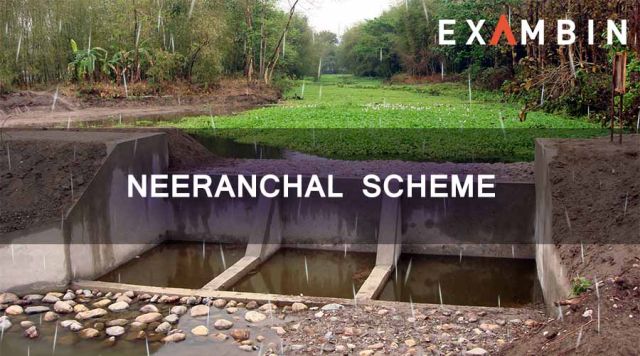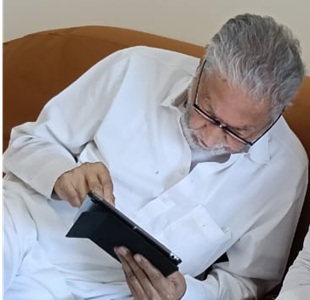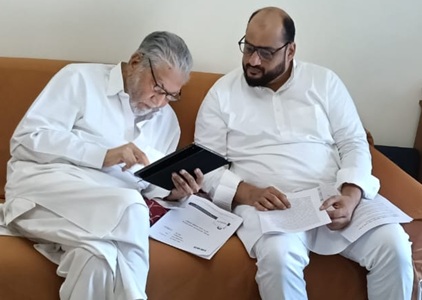India’s rain-fed areas are amongst the most challenging for the sustenance of the agrarian economy. These village economies are almost entirely single-cropped areas with scanty rainfall, prone to frequent droughts, soil erosion, fragile pasture lands necessitating large-scale cattle migration, depleting water tables, low employment opportunities and chronic poverty levels.
The Drought Prone Areas Programme (DPAP) and the Desert Development Programme (DDP) were the major programmes for drought moderation. Despite the fact that they were in operation for almost two decades, they did not create a substantial impact. The drought conditions in the country were increasing and ecological degradation was taking place unabated, especially in drought-prone and desert areas.
The participatory watershed development models at Ralegaon Sidhi and Adgaon in Maharashtra, Kabbalnala and Mittemari in Karnataka and Jhabua in Madhya Pradesh presented a case that drought can be beaten with concerted efforts and active participation of local farmers willing to share the benefits. The focus was on people’s own strategies and their own indigenous technologies. The watershed approach was inherently sound and filled a major gap in our land and water development programmes. The best way to reclaim watersheds was through an integrated management model.
The movement entailed complex issues of coordination as India entered the watershed collaborative era, giving greater access to local organisations in the holistic management principles. The National Watershed Development Programme for Rainfed Areas (NWDPRA) recognised that sustainability was possible only through people’s participation and implementation should be through a participatory model.
Institutional development should start from the planning stage and continue to the project implementation and maintenance stages. Exposure visits were necessary for increasing awareness levels and interaction. The role of women was seen as crucial from planning to implementation. Monitoring and evaluation by an independent agency were necessary. Conventional watershed activities had little potential for raising incomes of farmers. Hence the integrated management of watersheds broadened the scope of projects to include subsidiary income-generating activities and agricultural/non-agricultural activities.
From 1990 to 1999, India implemented the Integrated Watershed Development Program (IWDP) with World Bank assistance. The project objectives were to introduce improved and sustainable land management practices in selected watersheds. The project sought to facilitate inter-agency coordination in planning and implementation. Following completion, the World Bank assessment of the project outcomes was satisfactory. The land treatments were generally of good quality and the developments created a positive impact on the conservation and restoration of natural resources and increased agricultural production. The project achieved substantial involvement and commitment of local communities in planning, managing and maintaining improvements of communal and individual natural resources and assets.
With the emergence of the Panchayati Raj institutions, the watershed development teams at the village level got merged with the gram panchayats. This resulted in watershed development programmes at each level being administered by people who had many other responsibilities. There were coordination difficulties between transient actors pursuing departmental agendas. The sharp focus needed to implement watershed programmes was often absent because the officials had many other competing priorities. The guidelines required recasting for effective implementation. This the government did through the Neeranchal guidelines in 2015.
The Neeranchal scheme was designed to bring about institutional changes in watershed and rainfed management practices in India. It aimed to build systems that ensure watershed programmes are better focused, more coordinated and have quantifiable results. Further it aims to devise strategies for sustainability even after the withdrawal of project support. It promoted a watershed plus approach, supported improved equity, livelihoods and incomes through forward linkages on a platform of inclusiveness and local participation.
The Neeranchal project has an outlay of Rs 2,142 crore ($327 million) and seeks to translate into better implementation of the Pradhan Mantri Krishi Sinchayi Yojana (PMKSY). Neeranchal supports both the conservation and production outcomes, including the availability of water in rainfed areas, catering to the needs of small and marginal farmers as well as the asset-less, including women. Neeranchal incorporated the best practices of watershed management in India.
India’s watershed development programmes in the collaborative era have witnessed several success stories. The programme guidelines have been made highly participatory and adequate time has been given for implementation. In the successful implementation of the Neeranchal programme lies the future of millions of rain-fed farmers of India in overcoming agrarian distress.
(V. Srinivas, a 1989 batch IAS officer, is Chairman, Rajasthan Tax Board, and holds additional charge of Chairman of the state’s Board of Revenue. The views expressed are personal. He can be contacted at vsrinivas@nic.in)
—IANS






0 Comments